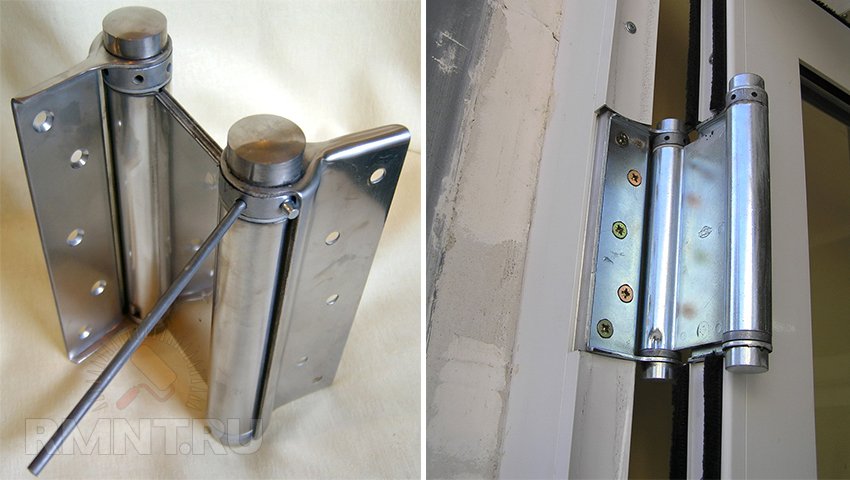What are the types of door hinges
The durability of the functioning of swing doors depends on the reliability of the hinges. But the correct choice and installation of hinges mean no less - an error will lead to sagging and warping of the door leaf. What types of these fittings exist depending on the material of the door and frame, you will learn from our review.
Wooden doors
One of the most "old" versions of the door hinge exists now. This is a forged patch front loop, which fully corresponds to the definition of handmade. It is used in wooden construction, and decoratively it is one of the central design elements of the front door.
In Soviet times, the most common type was a mortise detachable loop.

This model is still being installed. The lower part is attached to the box, and the upper part is attached to the canvas. With the door fully open, if the platbands do not interfere, the canvas can be removed without dismantling the hinges. This makes it possible to lubricate the hinge pin or put a washer on it if the door sagged slightly and began to cling to the floor (as a result of shrinkage of the house or shrinkage of the box).
The mortise universal hinge belongs to the one-piece type. It consists of five hinges separated by four wide washers.

Part of the loop (wing) with two extreme and one central hinge is attached to the box. A wing with two hinges is cut into the end of the door leaf. Such a hinge can withstand more significant loads than a detachable one (with the same finger size), but in order to remove the canvas, all hinges must be dismantled.
For interior doors, there are models with a decorative pattern on hinges and wings.

The one-piece type includes overhead butterfly loops, in which one wing enters the other.

And although the loop got such an original name due to the figured shape of the inner wing, there are models with a rectangular inner part.
In addition to straight mortise hinges, there are corner models. In this species, both wings (or one of them) are made in the form of a corner. They are used in a box with a vestibule, this type can be both one-piece and detachable.

The most difficult to install are hidden hinges.

Unlike conventional mortise hinges, another recess must be cut in the box and the end of the web to hide the mechanism of the hinge, which has three rotary axes. But this inconvenience is compensated by the special decorative properties of the door (when closed, the hinge is not visible at all) and the “wider” possibilities for opening it (up to 180 °).
Screwed hinges have a special mounting method: the frame part is screwed into the front surface of the box, and the counter part is screwed into the end of the door leaf. Therefore, such hinges are not suitable for ordinary doors. By design, they are:
- with one pin and overlay plate;
- with two pins;
- with three and four pins.



Moreover, in the latter case, such a hinge has a special screw that allows you to adjust the position of the cam and the height of the web relative to the box.

They are also called “spring”, since inside each axial cartridge there are springs that return the canvas to the plane of the door frame. Such doors open in both directions, so this mechanism is used for rooms with high traffic (hence the name - "bar").
Metal doors
For entrance metal doors, three types of hinges are most common.
1. Welded (drip). This is a kind of mortise loop, each part of which is welded to the box and canvas. The only drawback is the open view. And although such a hinge has anti-removable pins, its resistance to breaking is lower than that of a flush-mounted hinge.

2. Corner. Classic hinge for a rebate door. The hidden mounting part of the wings provides higher anti-burglary properties of the hinge.

3. Hidden. A special type of hinge, the mechanism of which is completely hidden in the box. It has absolute burglary resistance, but a long lever and increased bearing loads reduce durability.
